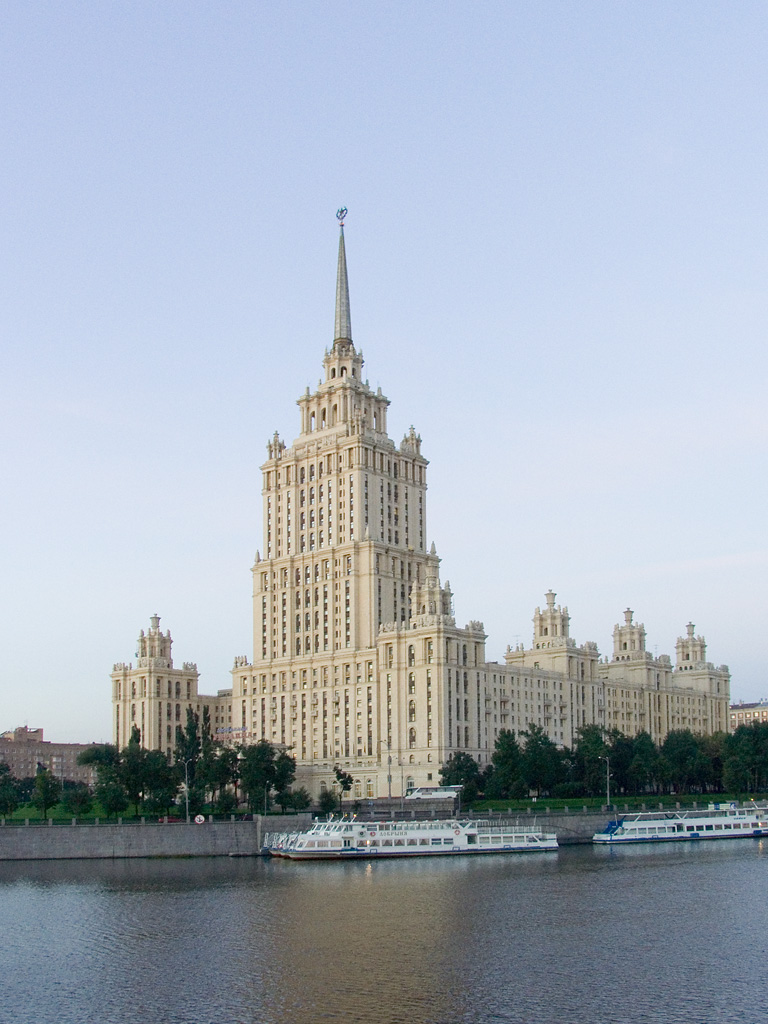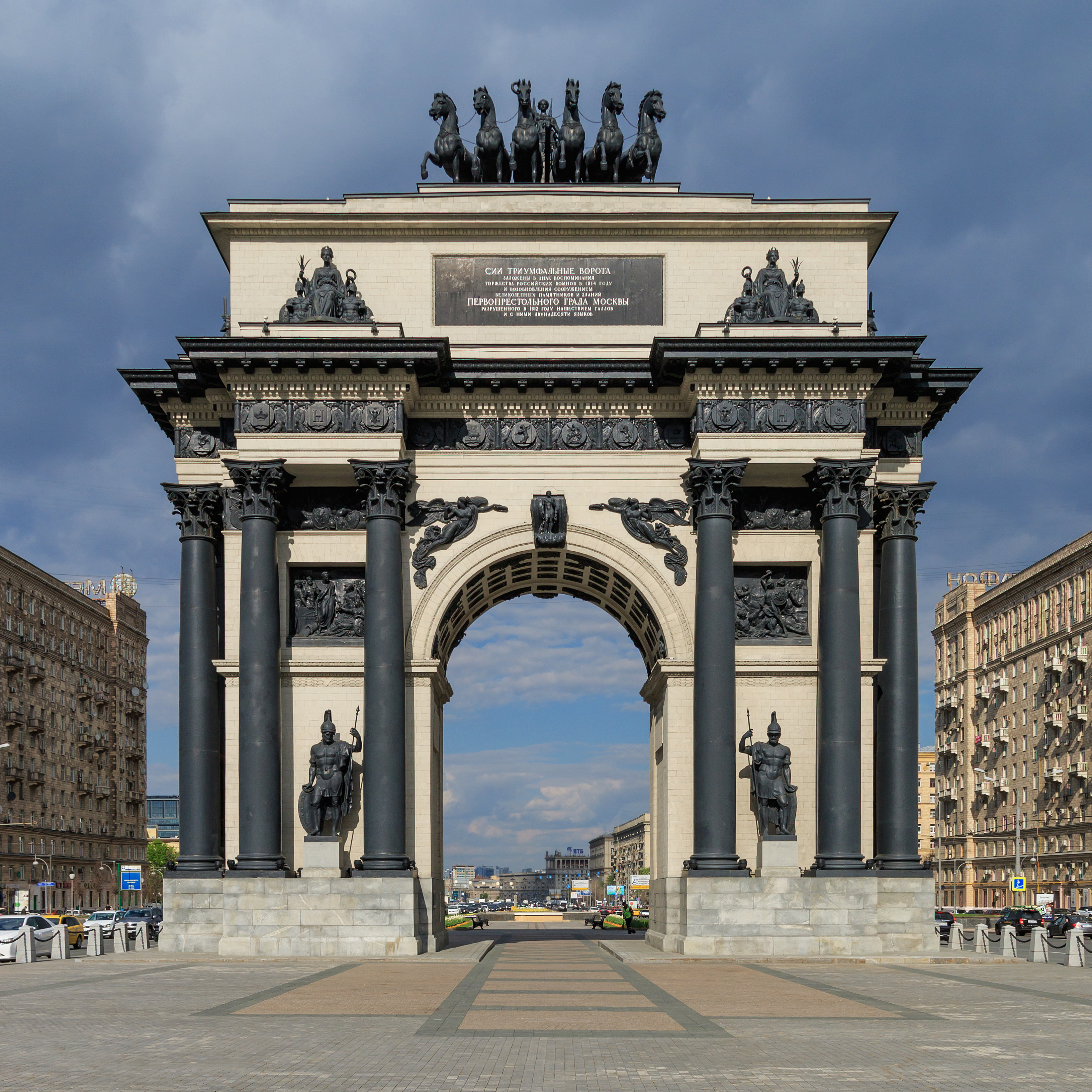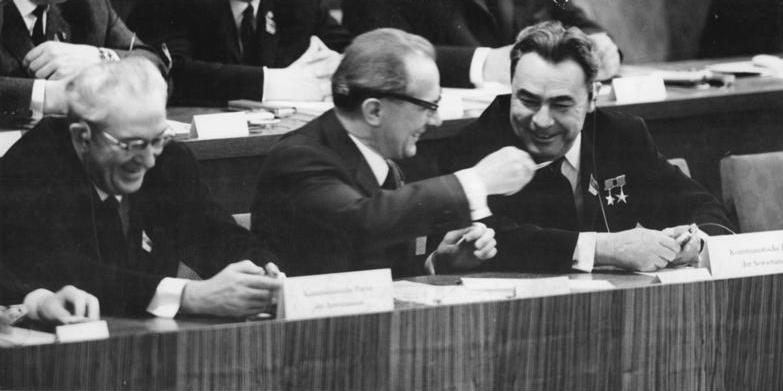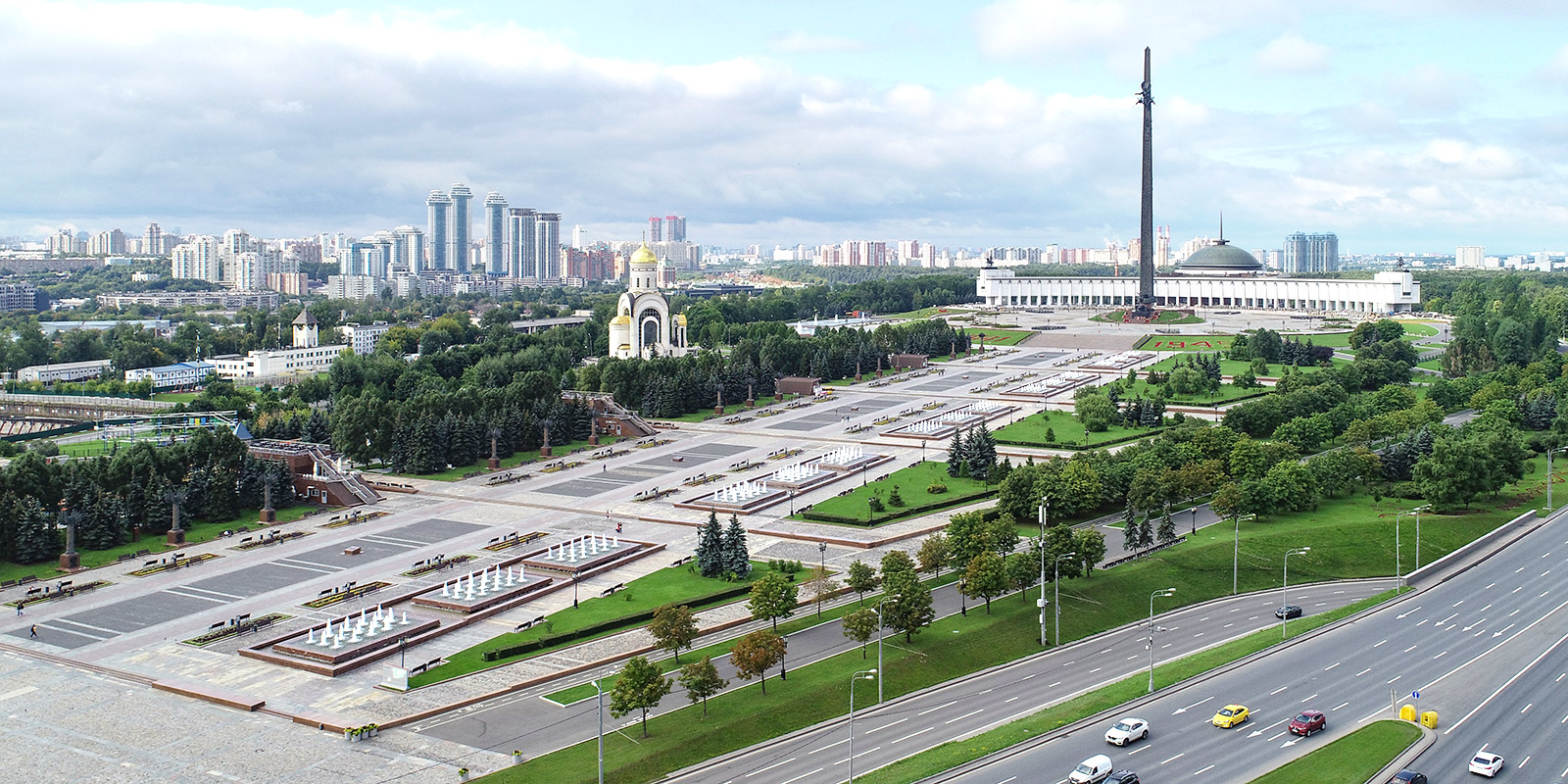|
Kutuzovsky Avenue
Kutuzovsky Prospekt (russian: Куту́зовский проспе́кт) is a major radial avenue in Moscow, Russia, named after Mikhail Illarionovich Kutuzov, leader of the Russian field army during the French invasion of Russia. The prospekt continues a westward path of Vozdvizhenka Street and New Arbat Street from ''Novoarbatsky Bridge'' over the Moskva River to the junction with ''Rublyovskoye Shosse''; past this point, the route changes its name to ''Mozhaiskoye Shosse''. Overview Present-day Kutuzovsky Prospekt emerged between 1957 and 1963, incorporating part of the old Mozhaiskoye Schosse (buildings no. 19 to 45) that was rebuilt in grand Stalinist style in the late 1930s on the site of the former Dorogomilovo Cemetery, and the low-rise neighborhoods of Kutuzovskaya Sloboda Street and Novodorogomilovskaya Street that were razed in the 1950s. Initially, Kutuzovsky Prospekt extended east to the Garden Ring; however, in 1963, at the beginning of the New Arbat redevel ... [...More Info...] [...Related Items...] OR: [Wikipedia] [Google] [Baidu] |
Radisson Royal Hotel, Moscow
Hotel Ukraina (), also branded and marketed as the Radisson Collection Hotel, Moscow (), is a five-star luxury hotel in the city centre of Moscow, on a bend of the Moskva River. The hotel is one of the " Seven Sisters", and stands tall. It is the tallest hotel in Russia, the tallest hotel in Europe, and the 52nd-tallest hotel in the world. It is a Radisson Collection hotel, managed by the Rezidor Hotel Group. History Hotel Ukraina was commissioned by Joseph Stalin.Stalin's grand hotel sells for £59m '''', 25 November 2005 It was designed by |
Stalinist Architecture
Stalinist architecture, mostly known in the former Eastern Bloc as Stalinist style () or Socialist Classicism, is the architecture of the Soviet Union under the leadership of Joseph Stalin, between 1933 (when Boris Iofan's draft for the Palace of the Soviets was officially approved) and 1955 (when Nikita Khrushchev condemned "excesses" of the past decades and disbanded the Soviet Academy of Architecture). Stalinist architecture is associated with the Socialist realism school of art and architecture. Features As part of the Soviet policy of rationalization of the country, all cities were built to a general development plan. Each was divided into districts, with allotments based on the city's geography. Projects would be designed for whole districts, visibly transforming a city's architectural image. The interaction of the state with the architects would prove to be one of the features of this time. The same building could be declared a formalist blasphemy and then receive the ... [...More Info...] [...Related Items...] OR: [Wikipedia] [Google] [Baidu] |
Poklonnaya Hill Arch
The third and the oldest surviving Triumphal Arch in Moscow was built in 1829–34 on Tverskaya Zastava Square to Joseph Bové's designs in order to commemorate Imperial Russia's victory over Napoleon. It replaced an earlier wooden structure built by the veterans of the Napoleonic Wars in 1814. The arch was built in brick and lined with ashlar. The columns and statues were of cast iron. A seiuga (six-horse chariot) was designed by Giovanni Vitali. The bilingual inscription in Russian and Latin ran as follows: The arch was dismantled in 1936 as part of Joseph Stalin's reconstruction of downtown Moscow. Vitali's sculptures were then put on exhibit at an architectural museum on the grounds of the former Donskoy Monastery. After the Second World War there were plans to rebuild the structure in front of the Belorussky railway station. The current arch was built to Bove's original designs in 1966–68 in the middle of Kutuzovsky Avenue, close to the Victory Park. An open space ... [...More Info...] [...Related Items...] OR: [Wikipedia] [Google] [Baidu] |
Borodino Panorama
Franz Roubaud (russian: Франц Алексеевич Рубо, translit=Franc Alekseevič Rubo; french: François Iwan Roubaud; June 15, 1856 - March 13, 1928) was a Russian painter who created some of the largest and best known panoramic paintings. He created circular paintings, exposed on a cylindrical surface and viewed from the inside at a lookout point. The painting was believed to reproduce the original scene with high fidelity. Biography Franz (François) Roubaud was born on 3/15 June 1856 in Odessa to Honoré Fortuné Alexis Roubaud and his wife Madelaine (née Sénèque). Franz was the fourth of five children in a Catholic family; his father was a bookseller and stationer, originally from Marseille. He studied at the Odessa Drawing School. In 1877 Roubaud went to Munich and studied at the Munich Academy of Fine Arts. He then settled in Saint Petersburg, working in the Imperial Academy of Arts and painting huge panoramas of historical battles. In 1904-12 Roubaud t ... [...More Info...] [...Related Items...] OR: [Wikipedia] [Google] [Baidu] |
Sberbank City
Sberbank City (former Mirax Plaza; Russian: ''Сбербанк-Сити'') is a building complex in Moscow, Russia, that opened in November 2021. It consists of five buildings, including two skyscrapers, with a gross floor area of . It is located in Moscow Kutuzovsky prospect (crossing with Kulnev street). When planned, the complex was to have a monorail connection crossing the Moskva River to the Federation complex and parking spaces for 2,950 cars. The construction project was led by the Russian project developers Mirax Group, also responsible for the nearby 506 metre-high Federation Tower The Federation Tower (russian: Башня Федерация, translit=Bashnya Federatsya) is a complex of two skyscrapers built on the 13th lot of the Moscow International Business Center in Moscow, Russia. The two skyscrapers are named Tower .... Designed by Sergey Kisselev & Partners, the multifunctional complex comprises two towers with 41 and 47 floors, and lower buildings. The compl ... [...More Info...] [...Related Items...] OR: [Wikipedia] [Google] [Baidu] |
Yuri Andropov
Yuri Vladimirovich Andropov (– 9 February 1984) was the sixth paramount leader of the Soviet Union and the fourth General Secretary of the Communist Party of the Soviet Union. After Leonid Brezhnev's 18-year rule, Andropov served in the post from November 1982 until his death in February 1984. Earlier in his career, Andropov served as the Soviet ambassador to Hungary from 1954 to 1957, during which time he was involved in the suppression of the 1956 Hungarian Uprising. He was named chairman of the KGB on 10 May 1967. In this position, he oversaw a massive crackdown on dissent carried out via mass arrests and involuntary psychiatric commitment of people deemed "socially undesirable". After Brezhnev suffered a stroke in 1975 that impaired his ability to govern, Andropov effectively dominated policy-making alongside Foreign Minister Andrei Gromyko, Defense Minister Andrei Grechko and Grechko's successor, Marshal Dmitry Ustinov, for the rest of Brezhnev's rule. Upon Brezhnev ... [...More Info...] [...Related Items...] OR: [Wikipedia] [Google] [Baidu] |
Mikhail Suslov
Mikhail Andreyevich Suslov (russian: Михаи́л Андре́евич Су́слов; 25 January 1982) was a Soviet statesman during the Cold War. He served as Second Secretary of the Communist Party of the Soviet Union from 1965, and as unofficial chief ideologue of the party until his death in 1982. Suslov was responsible for party democracy and power separation within the Communist Party. His hardline attitude resisting change made him one of the foremost orthodox communist Soviet leaders. Born in rural Russia in 1902, Suslov became a member of the All-Union Communist Party (Bolsheviks) in 1921 and studied economics for much of the 1920s. He left his job as a teacher in 1931 to pursue politics full-time, becoming one of the many Soviet politicians who took part in the mass repression begun by Joseph Stalin's regime. He was made First Secretary of Stavropol Krai administrative area in 1939. During World War II, Suslov headed the local Stavropol guerrilla movement. After t ... [...More Info...] [...Related Items...] OR: [Wikipedia] [Google] [Baidu] |
Edelweiss Apartment Tower
EDELWEISS (Expérience pour DEtecter Les WIMPs En Site Souterrain) is a dark matter search experiment located at the Modane Underground Laboratory in France. The experiment uses cryogenic detectors, measuring both the phonon and ionization signals produced by particle interactions in germanium crystals. This technique allows nuclear recoils events to be distinguished from electron recoil events. The EURECA project is a proposed future dark matter experiment, which will involve researchers from EDELWEISS and the CRESST dark matter search. Dark matter Dark matter is material which does not emit or absorb light. Measurements of the rotation curves of spiral galaxies suggest it makes up the majority of the mass of galaxies; and precision measurements of the cosmic microwave background radiation suggest it accounts for a significant fraction of the density of the Universe. A possible explanation of dark matter comes from particle physics. WIMP (Weakly Interacting Massive Particl ... [...More Info...] [...Related Items...] OR: [Wikipedia] [Google] [Baidu] |
Poklonnaya Hill
Poklonnaya Gora (russian: Покло́нная гора́, literally "bow-down hill"; metaphorically "Worshipful Submission Hill"') is, at 171.5 meters, one of the highest natural spots in Moscow. Its two summits used to be separated by the Setun River, until one of the summits was razed in 1987. Since 1936, the area has been part of Moscow and now contains the Victory Park with many tanks and other vehicles used in the Second World War on display. Historically, the hill had great strategic importance, as it commanded the best view of the Russian capital. Its name is derived from the Russian for "to bow down", as everyone approaching the capital from the west was expected to do homage here. During the French invasion of Russia in 1812, it was the spot where Napoleon in vain expected the keys to the Kremlin to be brought to him by Russians. Victory Park In the 1960s, the Soviet authorities decided to put the area to use as an open-air museum dedicated to the Russian victory over ... [...More Info...] [...Related Items...] OR: [Wikipedia] [Google] [Baidu] |
Leonid Brezhnev
Leonid Ilyich Brezhnev; uk, links= no, Леонід Ілліч Брежнєв, . (19 December 1906– 10 November 1982) was a Soviet Union, Soviet politician who served as General Secretary of the Communist Party of the Soviet Union, General Secretary of the Communist Party of the Soviet Union between 1964 and 1982 and Chairman of the Presidium of the Supreme Soviet between 1960 and 1964 and again between 1977 and 1982. His 18-year term as General Secretary was second only to Joseph Stalin's in duration. Brezhnev's tenure as General Secretary remains debated by historians; while his rule was characterised by political stability and significant foreign policy successes, it was also marked by corruption, inefficiency, Era of Stagnation, economic stagnation, and rapidly growing technological gaps with the West. Brezhnev was born to a working-class family in Kamianske, Kamenskoye (now Kamianske, Ukraine) within the Yekaterinoslav Governorate of the Russian Empire. After the re ... [...More Info...] [...Related Items...] OR: [Wikipedia] [Google] [Baidu] |






